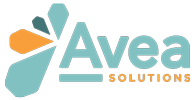
Electronic enrollments are tremendously valuable to providers. By offering a more streamlined and secure alternative, these enrollments serve to eliminate many of the headaches caused by paper EOBs. Any opportunity to incorporate automation in your process is certainly worth considering, and electronic enrollments make finding and freeing trapped revenue far easier than any analogue method.
But if you're unsure whether electronic enrollment is for you, here are some key facts you should know if you're thinking of making the switch:
1. Payers Can Require Providers to Complete up to Four Types of Enrollment
- Electronic Eligibility – Providers can check the eligibility status of current or prospective patients electronically via their clearinghouse.
- Electronic Institutional Claim Submission – Providers submit claims to payers electronically through their clearinghouse that previously would have been sent on a paper UB-04 form.
- Electronic Professional Claim Submission – Providers submit claims to payers electronically through their clearinghouse that previously would have been sent on a paper CMS-1500 or HCFA-1500 form.
- Electronic Remittance Advice (ERA) –The most common, and by far most important, enrollment type is Electronic Remittance Advice (ERA). Without ERAs, it’s impossible to have a truly “clean” billing process. Payers send an electronic summary of their claim determination to providers via their clearinghouse, both for payments or denials, in place of mailing the provider a paper Explanation of Benefits (EOB) file.
2. Having Said That, Most Payers Only Require ERA Enrollment
Most payers only require enrollment to receive ERAs in place of EOBs, and allow providers to submit both professional and electronic claims without prior enrollment. However, it’s still best practice for providers to contact a payer before submitting their initial claim to that organization electronically, as basic provider demographic details are needed to create an out of network profile. These demographics include provider name, service location(s), pay-to address, Tax ID, NPI, and taxonomy. Providers should contact each payer to which they plan to submit claims to determine that payer’s required demographics.
Providers can contact their clearinghouse or visit this free online resource and search for payers by name to see which enrollments they require.
3. Enrollment Processes Are Not Created Equal
Each payer falls into one of the following buckets in terms of what their enrollment process involves:
- Some payers require no enrollment. Hooray!
- Payers such as Cigna offer a simple enrollment process that a provider’s clearinghouse can complete without any input from the provider.
- Some payers, such as Magellan, require a provider to complete and sign an enrollment form and return it to their clearinghouse, which will forward it to the payer. Providers can obtain these forms from their clearinghouse or billing company, and it can take anywhere from 24 hours to 30 business days for them to process. Some payers in this group, such as Aetna, also require providers to sign up to receive claim payments via Electronic Funds Transfer (EFT) in place of paper checks to receive ERAs.
- Payers such as Beacon Health Options (AKA Value Options) use third party vendors, including PaySpan and InstaMed, to manage ERA and EFT enrollments. These vendors require providers to complete an easy online EFT registration process to receive ERAs from these payers. Providers must complete this online registration themselves, instead of having their clearinghouse or billing company complete it. These vendors often will only allow registration once the payer in question has issued one or more payments to the provider.
- Payers such as Humana require ERA enrollment through their own website. These enrollments take only a few minutes, but typically also require that the payer has already paid one or more claims to the provider before allowing enrollment.
At Avea, we complete as much of the enrollment process for providers as payers will allow, then guide providers through the steps that must be completed by the provider themselves, such as signing forms or completing third party vendor registrations online.
Further Reading:
- 3 Reasons Why Automation Is Essential for Claims Management
- 3 Ways to Avoid Falling Victim to Usual & Customary Rate Reductions
- Aspen Ridge & Avea: Sharing A Vision



